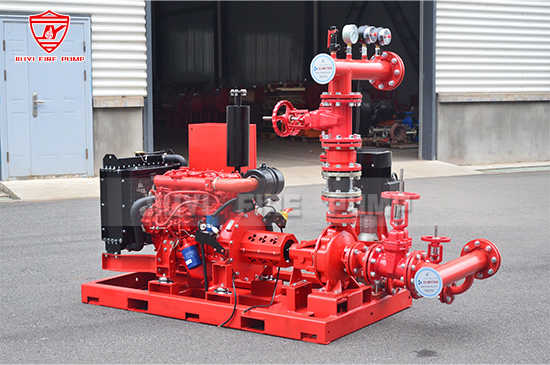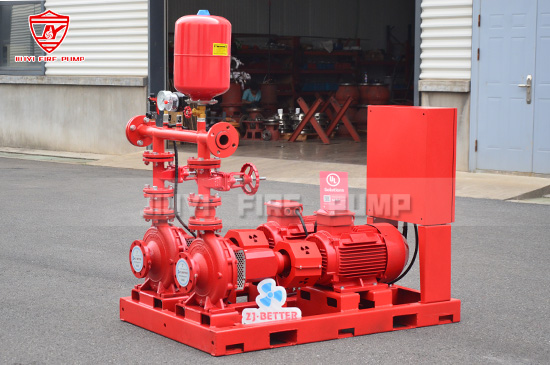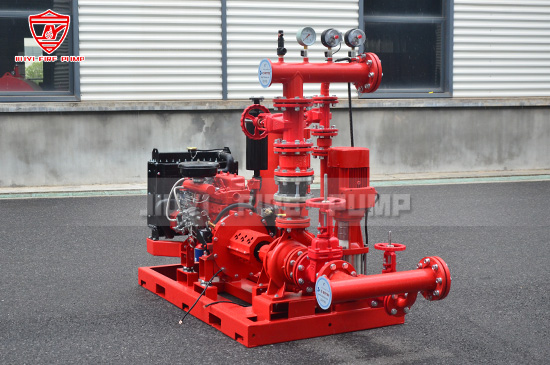In this article, we’ll explore the importance of repacking, the factors that influence its frequency, and key maintenance tips for fire pump owners and operators.
Repacking involves replacing or renewing the packing material around the shaft of the fire pump. The packing serves as a seal that prevents water or other fluids from leaking out of the pump during operation. Over time, this packing material can wear down or become damaged, reducing the pump’s efficiency and performance. Repacking helps maintain a tight seal, ensuring the pump operates at optimal pressure and flow levels.
Proper repacking prevents leaks, prolongs the life of the pump, reduces the risk of equipment failure, and enhances the overall performance of the fire pump system. A pump that is regularly repacked is less likely to experience issues such as water loss or loss of pressure, which could compromise the safety of the system.

The frequency with which you should repack your fire pump depends on several factors, including the type of fire pump, the conditions it operates under, and the manufacturer’s guidelines. However, general best practices suggest repacking should be done as follows:
Annually: Most fire pumps require repacking on an annual basis. This ensures that the pump operates at maximum efficiency and reduces the likelihood of unexpected maintenance issues.
After 1,000-1,500 Hours of Operation: Some fire pumps may require repacking after reaching a certain number of operational hours. Typically, this is between 1,000 to 1,500 hours of use, depending on the pump model and operational conditions.
After Significant Leaks or Decrease in Performance: If you notice a significant drop in performance or discover water leaking from the pump, it is essential to repack immediately. This may be necessary even if you haven’t reached the standard maintenance schedule yet.
In Harsh Conditions: Fire pumps that operate in harsh environments (such as high temperatures, heavy debris, or corrosive conditions) may require more frequent repacking. Extreme conditions cause faster wear and tear on the packing, leading to the need for more frequent maintenance.
Manufacturer’s Recommendations: Always check the manufacturer’s manual for specific recommendations regarding repacking frequency. Some pumps may have unique maintenance needs or special packing materials that affect how often repacking is required.
Repacking a fire pump should be done by a trained technician or maintenance personnel. If you are unfamiliar with the process, it’s best to hire a professional. However, here is a general overview of the steps involved in repacking a fire pump:
Shut Down the Pump: Before starting the repacking process, ensure the pump is turned off and disconnected from the power source to prevent any accidents.
Drain the System: Drain any water or fluid in the pump system to ensure safety and prevent contamination when removing the old packing material.
Remove the Old Packing: Carefully remove the old packing material around the pump shaft. You may need specialized tools to loosen and extract the packing.
Clean the Shaft: Clean the shaft thoroughly to remove any debris, dirt, or old packing material that may interfere with the new packing.
Install the New Packing: Cut the new packing material to the required length and wrap it around the shaft, ensuring a tight fit. Be cautious not to overtighten, as this can cause unnecessary friction.
Reassemble the Pump: Once the new packing is in place, reassemble the pump components, ensuring everything is securely tightened.
Test the Pump: After repacking, run the fire pump to check for leaks and ensure it is operating smoothly. Check the packing regularly for the first few hours of operation to ensure it is functioning correctly.

It’s important to keep an eye on the performance of your fire pump and look out for any signs that repacking may be necessary. Common indicators include:
Water Leaks: If you notice water leaking from around the pump shaft, it may be time to repack the pump.
Decrease in Pressure: A drop in water pressure or flow may indicate a loss of packing material or a worn-out seal.
Increased Friction or Heat: If the pump becomes unusually hot or noisy during operation, it may be due to insufficient packing, causing excessive friction.
Excessive Wear: If you notice visible wear on the packing or the pump shaft, it could be a sign that the packing has broken down.
In addition to regular repacking, it’s essential to maintain your fire pump properly to ensure it continues to operate efficiently. Here are some tips to keep your fire pump in top condition:
Regular Inspections: Conduct regular inspections to check for signs of wear, leaks, or other performance issues. Catching problems early can prevent costly repairs and ensure the pump is always ready to perform.
Lubrication: Ensure that the pump is properly lubricated. This helps reduce wear and tear and improves the overall performance of the system.
Monitor Pump Performance: Regularly monitor the pump’s performance to identify any drop in pressure or other signs of malfunction.
Follow Manufacturer Guidelines: Always follow the manufacturer’s maintenance schedule and recommendations for servicing, lubricating, and repacking your fire pump.
Train Staff: Make sure your maintenance personnel are trained to properly maintain and service the fire pump system. Properly trained staff can detect and address issues early on, preventing downtime.

Repacking a fire pump is an essential part of fire pump maintenance that helps ensure the system is ready for action when it’s needed most. While the frequency of repacking may vary depending on the pump type and conditions, it is generally recommended to repack your fire pump annually or after 1,000-1,500 hours of operation. Always monitor your fire pump for signs of leaks, pressure loss, or excessive friction, as these are indicators that repacking may be necessary.
By following the manufacturer’s guidelines, regularly inspecting the system, and properly training your staff, you can ensure that your fire pump remains in optimal condition and that your fire protection system is always ready to safeguard lives and property.